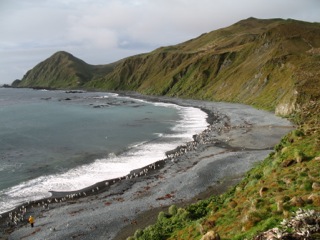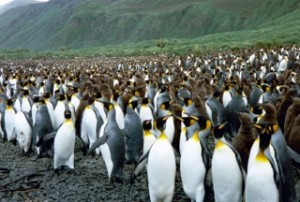There are many threats to our environmental security: climate change, habitat loss and degradation, pollution. All are damaging the environment and impacting on our long-term survival. One threat that seems to have been often overlooked by the public, however, is the effect of invasive species.
Invasive species are non-native species that adversely affect the invaded region. Not every non-native species becomes invasive: some fail to establish while others may establish but at sufficiently low population densities to have minimal impact on their new home. But a few species will find themselves so at home in their new land that their populations explode and, due to a lack of any predators adapted to deal with them, their populations remain unchecked.
There are many famous examples of invasive species: the Burmese python in Florida, rabbits and cane toads in Australia, the grey squirrel in the UK and Ireland. Attempts to control all these species have been made over the years, though none have successfully managed to completely eradicate them.
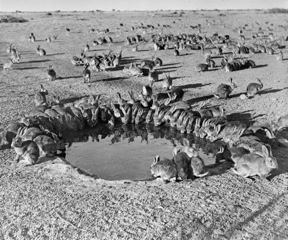
While much of the media is focused on local invasive species, the greatest impacts are often found not in large inhabited countries but on small, isolated islands. You may be wondering how invasive species can reach small, isolated islands but humankind’s reach has been vast and in the days of shipwrecks and long voyages sailors often found themselves on shores never-before touched by man. When they came ashore so too did stowaways in the form of rats. Some species were even purposefully introduced in order to provide food for victims of shipwrecks. In these ways species including rats, cats, rabbits, pigs, sheep and reindeer have found their way to islands all around the world, including those in the sub-Antarctic.
The impacts of these species have been great and varied. Many islands are home to ground-nesting seabirds and their eggs and chicks are extremely vulnerable to predation by rats and cats while their nesting sites can be damaged by rabbits and larger mammals. Grazing also impacts on the islands, leading to habitat loss and soil erosion. As seabird numbers have fallen due to interactions with fishing gear, harvesting for food and though the effects of invasive species on their breeding success, attempts have been made to rid islands of these now unwelcome interlopers.
The effects have been mixed. Some attempts have been hugely successful. The most successful is arguably that of Campbell Island, a sub-Antarctic island south of New Zealand. It had a succession of eradications starting in the 1980s that culminated in the early 2000s with the eradication of rats across the entirety of its 113 square kilometres. This was at the time the largest area ever cleared of rats. I remember being told by a lecturer, though this may be apocryphal, that there was a conference going on at the time where people were explaining why it was impossible to eradicate rats from large islands at the very same time that this eradication programme was coming to a successful close.
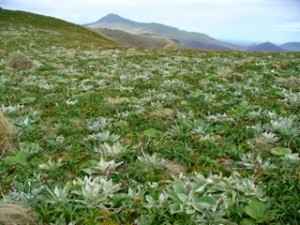
Some attempts have not been so successful and they highlight the importance of good management and understanding of food web interactions. I believe, or at least I certainly hope, that the following example is the most extreme case to date. Without further ado, I present to you the case of Macquarie Island.
Macquarie Island is a sub-Antarctic island between Australia and New Zealand. It is home to elephant seals, three species of fur seal and thirteen species of seabirds including penguins, petrels and albatrosses. Rats, mice and cats were introduced by sealers in the early 1800s and rabbits were introduced in the 1870s. Both the cats and the rabbits have had devastating impacts on the seabird colonies. Rabbits caused erosion through their burrowing and cropping of the vegetation while the rats ate young chicks. The combination of predation and habitat destruction are thought to be responsible for extinction of the two endemic species on the island, the Macquarie Island parakeet and the Macquarie Island rail.
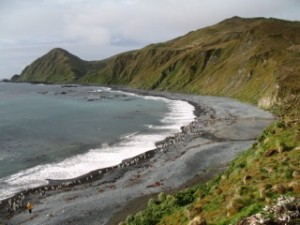
By the 1980s the habitat destruction was becoming significant and a decision was made to control the rabbits through the introduction of myxomatosis which decimated the rabbit population. This had an unexpected impact on the cats: it turned out the cats had been predating on the rabbits and used them as their main food source so when the rabbits disappeared the cats turned their attention to seabird chicks. Once this was realised the need to control the cat population was quickly recognised.
A cat eradication programme began in 1985 and by 1999 the last cat on the island was killed. You would be forgiven for thinking that this is the end of the story: rabbits controlled, cats switched their diet, the mistake is recognised, cats are controlled, and now the seabirds can live happily ever after. . . If only it were that simple.
The rabbit population began to re-establish itself. It increased rapidly and by 2006 was back to pre-control levels. The rabbits were devastating the island In 2006 a large landslip, caused by erosion by rabbits, partly destroyed a penguin colony.
It was clear that something had to be done and in 2007 the Australian Government announced their intention to eradicate Macquarie of invasive rabbits and rodents (rats and mice) at a cost of A$25 million. The need for this eradication was highlighted in a 2009 paper by Dana Bergstrom and colleagues from the Australian Antarctic Division. They showed the full effects of the cat eradication programme on the rabbit population and the terrible consequences to the vegetation of the island. Their report highlighted the need for integrated eradication programmes that examine the whole ecosystem and predict and plan for unintended consequences of the removal of invasive species.
The story could have ended there, a costly mistake both in ecological and economic terms. It is where the story ended for me until I started researching this piece. It turns out that there is a surprisingly happy ending as earlier this month the Australian and Tasmanian governments announced that Macquarie was officially pest free following the success of their eradication programme. This success means that Macquarie now beats Campbell Island as the largest island cleared of pests, an achievement that is of global significance. It’s an incredible feat, one I feared would be impossible. Though it will still take time for Macquarie to fully recover from the effects of more than 200 years of alien inhabitants, it now has that time. Finally Macquarie is home only to the birds and seals; a sub-Antarctic paradise has been restored.
Author: Sarah Hearne, hearnes[at]tcd.ie, @SarahVHearne
Images: Wikicommons

